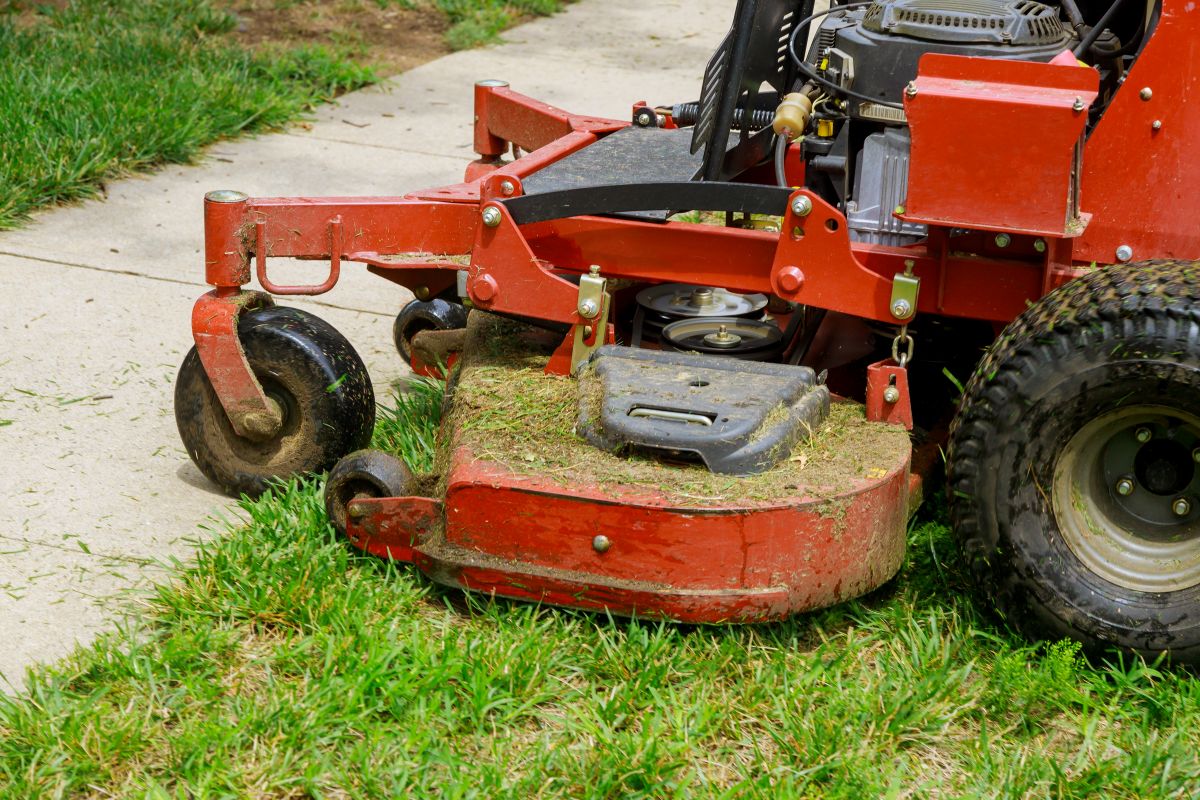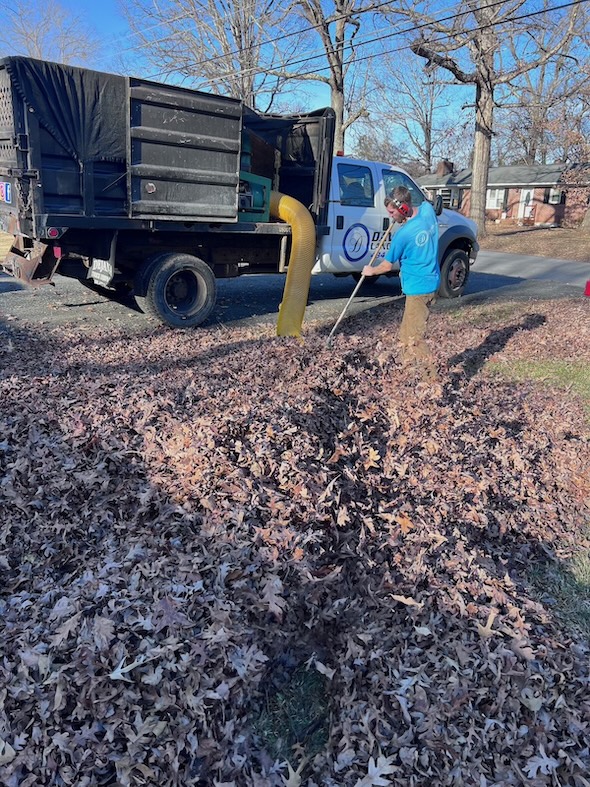I've been in the lawn care business for over seven years, and one question I hear constantly is: "How often should I mow my lawn?" The answer isn't as simple as you might think. After maintaining hundreds of lawns across Central Virginia, I've learned that the right mowing schedule depends on several factors that many homeowners overlook.
Let me share what I've discovered about weekly versus bi-weekly lawn mowing schedules and help you decide which approach works best for your specific situation.
Understanding Grass Growth Patterns
Grass doesn't grow at the same rate all year. During spring and early summer, your lawn grows faster because of increased rainfall and warmer temperatures. This is when I see most homeowners struggling to keep up with their mowing schedules.
In my experience, cool-season grasses like fescue and bluegrass grow most actively when temperatures range between 60-75°F. During peak growing season, these grasses can grow 2-3 inches per week. Warm-season grasses like Bermuda and Zoysia prefer temperatures between 80-95°F and have their own growth patterns.
I always tell my clients to watch their grass, not the calendar. The "one-third rule" is your best friend here. Never cut more than one-third of the grass blade height in a single mowing. This rule helps me determine the right schedule for each property I maintain.
Weekly Mowing: The Gold Standard
When I started my landscaping business, I noticed that properties with weekly mowing schedules always looked the best. There's a good reason for this consistency.
Weekly mowing keeps your grass at an optimal height throughout the growing season. When you mow weekly, you're removing smaller amounts of grass each time, which reduces stress on your lawn. This approach promotes healthier root development and creates that lush, green appearance everyone wants.
I've found that weekly mowing works best for:
- Properties with high-quality soil and regular irrigation
- Lawns that receive full sun for most of the day
- Areas with consistent rainfall or sprinkler systems
- Homeowners who want that "picture-perfect" lawn appearance
The downside? Weekly mowing requires more time and effort. If you're hiring a professional lawn mowing service, it also means higher annual costs. However, the investment often pays off in curb appeal and property value.
Bi-Weekly Mowing: The Practical Choice
Not every lawn needs weekly attention. Over the years, I've maintained many properties successfully with bi-weekly schedules. This approach works well for homeowners who want a neat appearance without the intensive maintenance.
Bi-weekly mowing can be effective when:
- Your grass grows slower due to shade or poor soil conditions
- You live in an area with limited rainfall
- Your lawn consists of slower-growing grass varieties
- You prefer a more natural, less manicured look
The key to successful bi-weekly mowing is timing. You need to cut before the grass gets too long. I always monitor weather conditions and adjust schedules accordingly. During slow growth periods, bi-weekly mowing keeps lawns looking presentable without over-maintenance.
Factors That Influence Your Mowing Schedule
After years of providing residential lawn mowing services, I've identified several factors that should influence your decision:
Grass Type and Variety Different grass types have different growth rates. Tall fescue, common in our Central Virginia area, grows steadily throughout the season. Bermuda grass grows aggressively during summer months but slows down in cooler weather.
Weather Conditions Rain accelerates grass growth significantly. During wet springs, I often switch clients from bi-weekly to weekly schedules temporarily. Drought conditions have the opposite effect, allowing for extended intervals between cuts.
Soil Quality Rich, well-fertilized soil produces faster grass growth. Poor soil conditions naturally slow growth, making bi-weekly schedules more practical. I always assess soil quality when recommending mowing frequencies to new clients.
Sun Exposure Lawns in full sun grow faster than those in shade. Properties with mixed sun and shade conditions often need customized approaches for different lawn areas.
Fertilization Schedule Regular fertilization promotes faster growth. If you fertilize frequently, you'll likely need more frequent mowing. I coordinate fertilization and mowing schedules for optimal results.
Seasonal Adjustments: What I've Learned
Your mowing schedule shouldn't stay the same year-round. I adjust schedules based on seasonal growth patterns:
Spring (March-May) This is peak growing season. Most lawns benefit from weekly mowing during this period. I see dramatic differences between properties that maintain weekly schedules versus those that stretch to bi-weekly.
Summer (June-August) Growth typically slows during hot, dry periods. Many lawns can shift to bi-weekly schedules unless they receive regular irrigation. I monitor moisture levels closely during summer months.
Fall (September-November) Growth picks up again with cooler temperatures and fall rains. I often return to weekly schedules during early fall, then gradually extend intervals as winter approaches.
Winter (December-February) Most grasses enter dormancy. Monthly maintenance or spot-cutting handles any growth during mild winter periods.
Signs Your Schedule Needs Adjustment
I've learned to recognize when a mowing schedule isn't working:
Too Frequent Mowing Signs:
- Grass clippings are very short or sparse
- Lawn appears scalped or stressed
- Brown tips on grass blades
- Thin or patchy growth patterns
Too Infrequent Mowing Signs:
- Removing more than one-third of grass height
- Clumps of clippings left on the lawn
- Uneven appearance after mowing
- Grass going to seed
Making the Right Choice for Your Property
Based on my experience maintaining lawns throughout Lynchburg, Concord, Appomattox, and Forest, here's my recommendation process:
Start with weekly mowing during peak growing season. Monitor your grass growth and adjust accordingly. If you notice minimal growth between weekly cuts, extend to bi-weekly. If grass gets too long between bi-weekly cuts, return to weekly.
Consider your goals. Do you want a golf course appearance? Stick with weekly mowing. Are you satisfied with a neat, well-maintained look? Bi-weekly might work perfectly.
Budget matters too. Weekly professional lawn mowing services cost more than bi-weekly, but the results often justify the investment for homeowners who prioritize curb appeal.
The Equipment Factor
Your mowing equipment affects schedule flexibility. Sharp mower blades cut cleanly and handle longer grass better. Dull blades tear grass and require more frequent cutting to maintain appearance.
I always use commercial-grade equipment that handles varying grass heights effectively. This flexibility allows me to adjust schedules based on conditions rather than equipment limitations.
Environmental Considerations
Frequent mowing has environmental impacts. More frequent cuts mean more fuel consumption and emissions. However, maintaining proper grass height promotes healthier lawns that better absorb carbon dioxide and produce oxygen.
I balance environmental concerns with lawn health by using efficient equipment and optimizing route planning for residential lawn mowing services.
Why Professional Services Make Sense
Managing mowing schedules requires experience and flexibility. Professional lawn mowing services near you can adjust schedules based on conditions, use proper equipment, and maintain consistent results.
I've seen many homeowners struggle with timing, equipment maintenance, and seasonal adjustments. Professional services eliminate these hassles while ensuring optimal lawn health.
After seven years of providing lawn mowing services in Central Virginia, I've learned that the best schedule is the one that keeps your grass healthy while meeting your aesthetic and budget goals. Whether weekly or bi-weekly, consistency and proper technique matter more than rigid adherence to any particular schedule.
Your lawn is unique, and its needs change throughout the year. Pay attention to growth patterns, adjust schedules seasonally, and don't be afraid to modify your approach based on results.
Ready to find the perfect mowing schedule for your property? Contact Davidson Landscaping today for a free consultation. We'll assess your lawn's specific needs and recommend a maintenance schedule that keeps your property looking its best year-round.
Frequently Asked Questions
How do I know if my lawn needs weekly or bi-weekly mowing?
Monitor your grass growth rate. If you're cutting more than one-third of the grass height with bi-weekly mowing, switch to weekly. If weekly cuts remove very little grass, bi-weekly may be sufficient.
Can I switch between weekly and bi-weekly schedules during the year?
Yes, adjusting schedules seasonally is recommended. Most lawns benefit from weekly mowing during peak growing season (spring and early fall) and can extend to bi-weekly during slower growth periods.
Does grass type affect how often I should mow?
Absolutely. Fast-growing grasses like Bermuda may need weekly cutting during peak season, while slower-growing varieties like some fescues can often go bi-weekly. Your local climate and soil conditions also influence growth rates.





